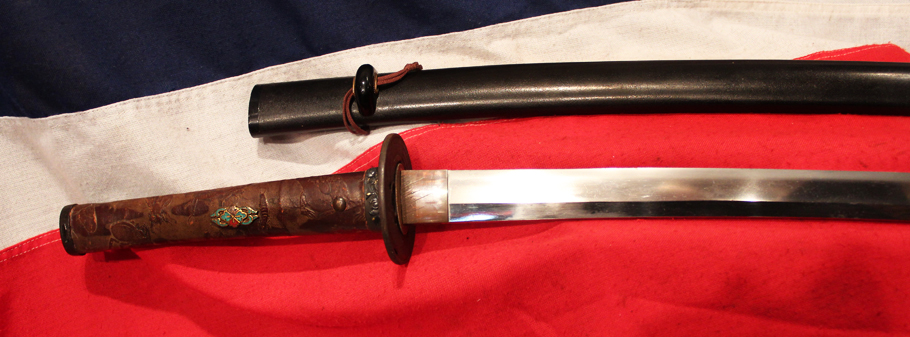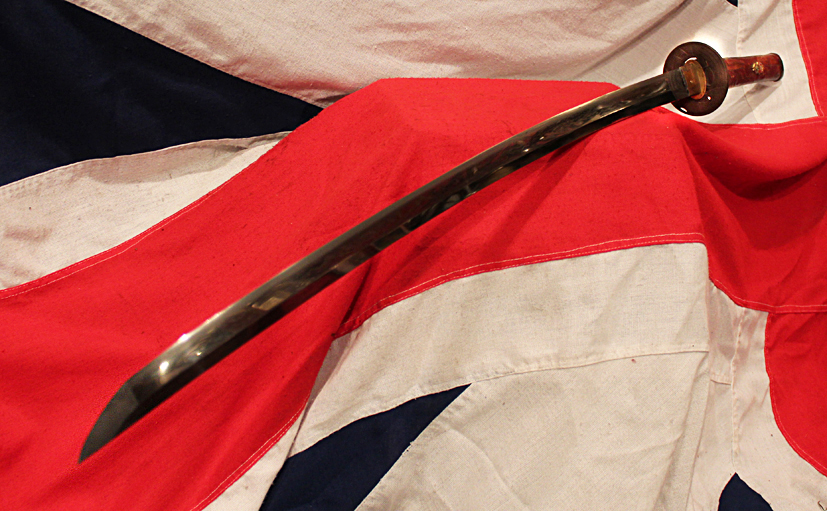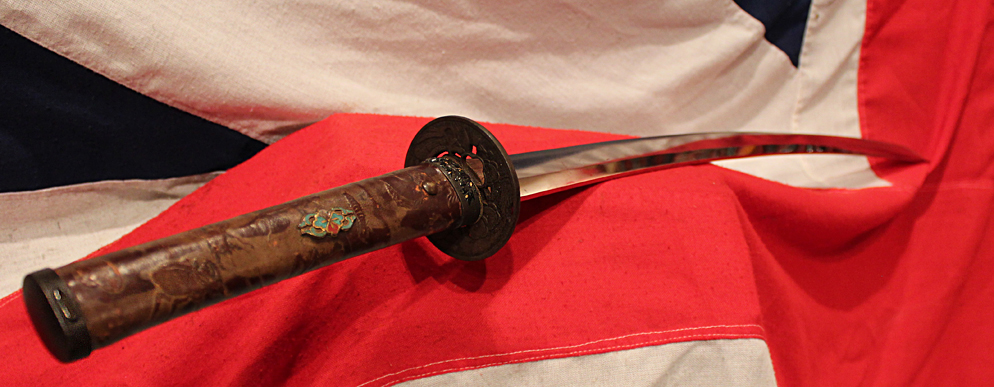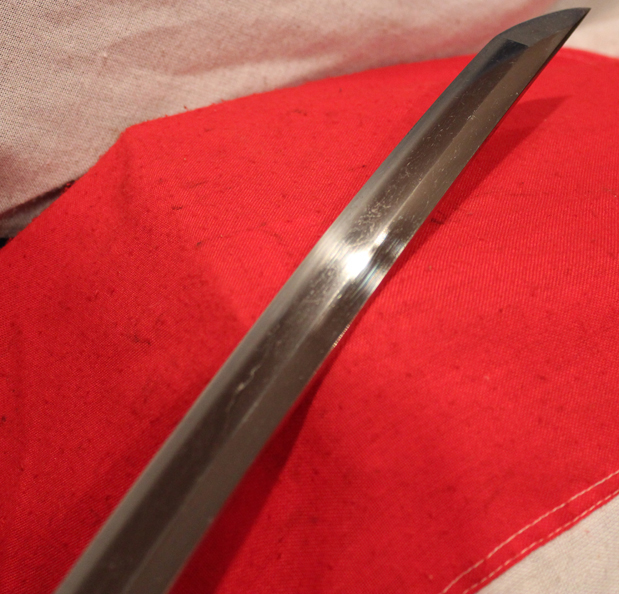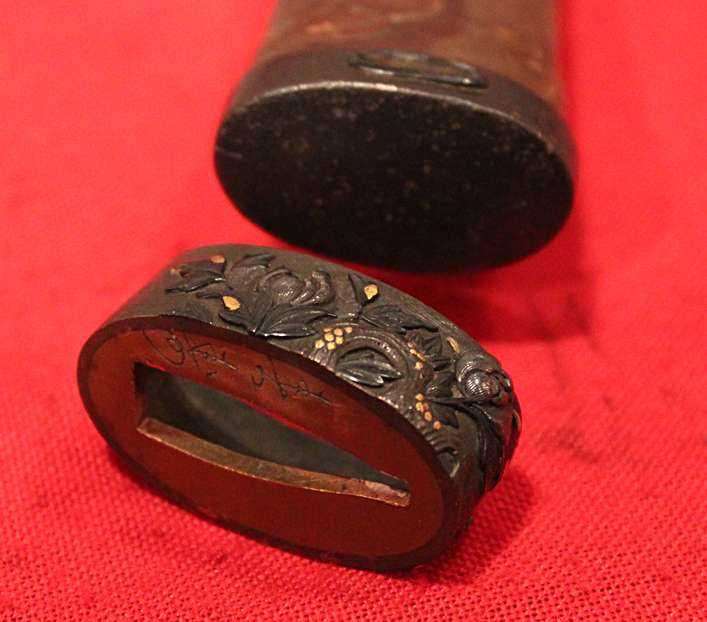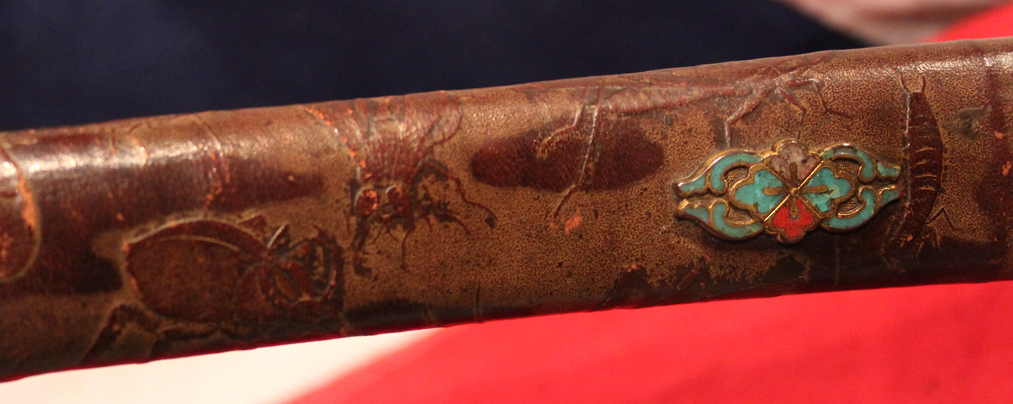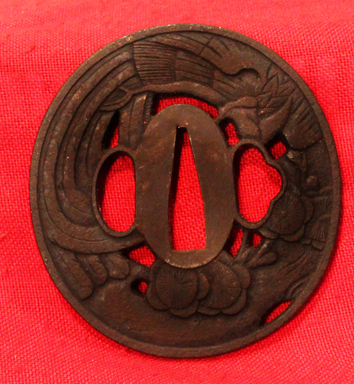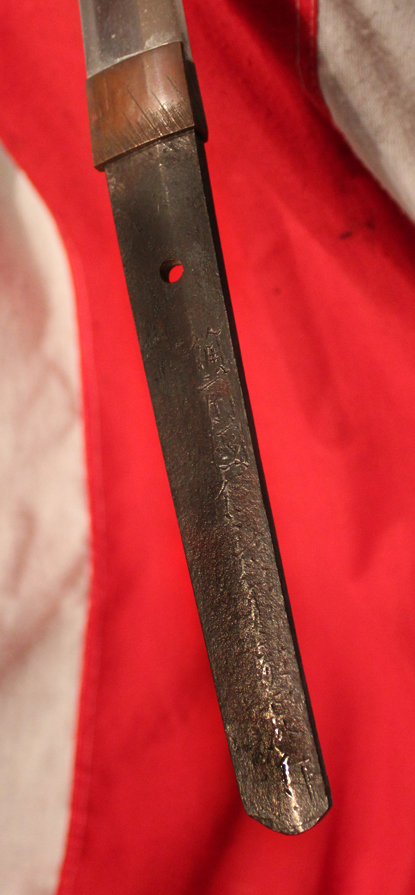A Most Fine & Beautiful Koto Period Katana Signed Sukesada of Bizen Dated 1560. With Original & Exceptionally Rare Original Dutch Black-ship 1540’s Imported Leather Bound Tsuka. With Original Japanese Insect Pattern Embossing
Signed Bizen kuni ju Osafune Sukesada. One of the Sukesada, Bizen smiths. A very nice Koto blade, that has seen battle, with fine mounts and, most unusually, a very interestingly, embossed Dutch leather, called goudleer, bound tsuka, with cloisonne enamel menuki. Embossed Dutch leather goudleer was imported to Japan by the Dutch and Portuguese in the 16th century and was highly prized as screens and other decorative works of art. We have also seen, although most rarely, other items decorated with this distinctive Dutch leatherwork such as samurai purses and saya coverings. The embossing on the leather are various insects, highly popular in samurai fittings decor. The fushi tsuka mount is very fine, signed by the maker, and decorated with flowers and gold buds.
Insects in general have been celebrated in Japanese culture for centuries. The Lady Who Loved Insects is a classic story of a caterpillar-collecting lady of the 12th century court; the Tamamushi, or Jewel Beetle Shrine, is a seventh century miniature temple, once shingled with 9,000 iridescent beetle forewings. In old Japanese literature, poems upon insects are to be found by thousands, Daisaburo Okumoto is director of the Fabre Insect Museum. An avid insect collector and a scholar of French literature, he has translated many of Fabre's works. He ascribes the popularity of insects in Japan to national character. It seems like Japanese eyes are like macro lenses and Western eyes are wide-angle, he says. A garden in Versailles, it's very wide and symmetrical. But Japanese gardens are continuous from the room and also very small. We feel calm when we look at small things. The medieval Japanese monk Yoshida Kenko put it this way: “If man were never to fade away like the dews of Adashino, never to vanish like the smoke over Toribeyama, how things would lose their power to move us”
Harima, Mimasaka and Bizen provinces were prospering under the protection of the Akamatsu family. Above all, Bizen province turned out a great many talented swordsmiths. A large number of swords were made there in the late Muromachi period not only supplying the demand of the Age of Provincial Wars in Japan but also as an important exporting item to the Ming dynasty in China. At the onset of the decline of the Ashikaga shogunate in 1565 ad., and Yoshiteru's assassination the shogunate of Yoshiteru was filled by his two-year old son, Yoshiaki. Yoshiteru's brother was the abbot of a Buddhist monastery. He resigned this position and attempted to assume the shogunate. These efforts ultimately failed. The demand for swords began an accent to unimaginable levels. The national unrest and violent civil war did not cease until the successful takeover of the shogunate by Tokugawa Iyeyasu. The "Osafune - Kozori" group was the major supplier of blades for these events. 29 inch blade Tsuba to tip. On just one side of the blade there are combat stress hagire marks near the top section. This blade has certainly seen combat, and is simply ideal for the historical collector of beautiful samurai weaponry of battle, rather than those seeking blade condition perfection. 40 inches long approx overall in saya
Code: 22916
6450.00 GBP


